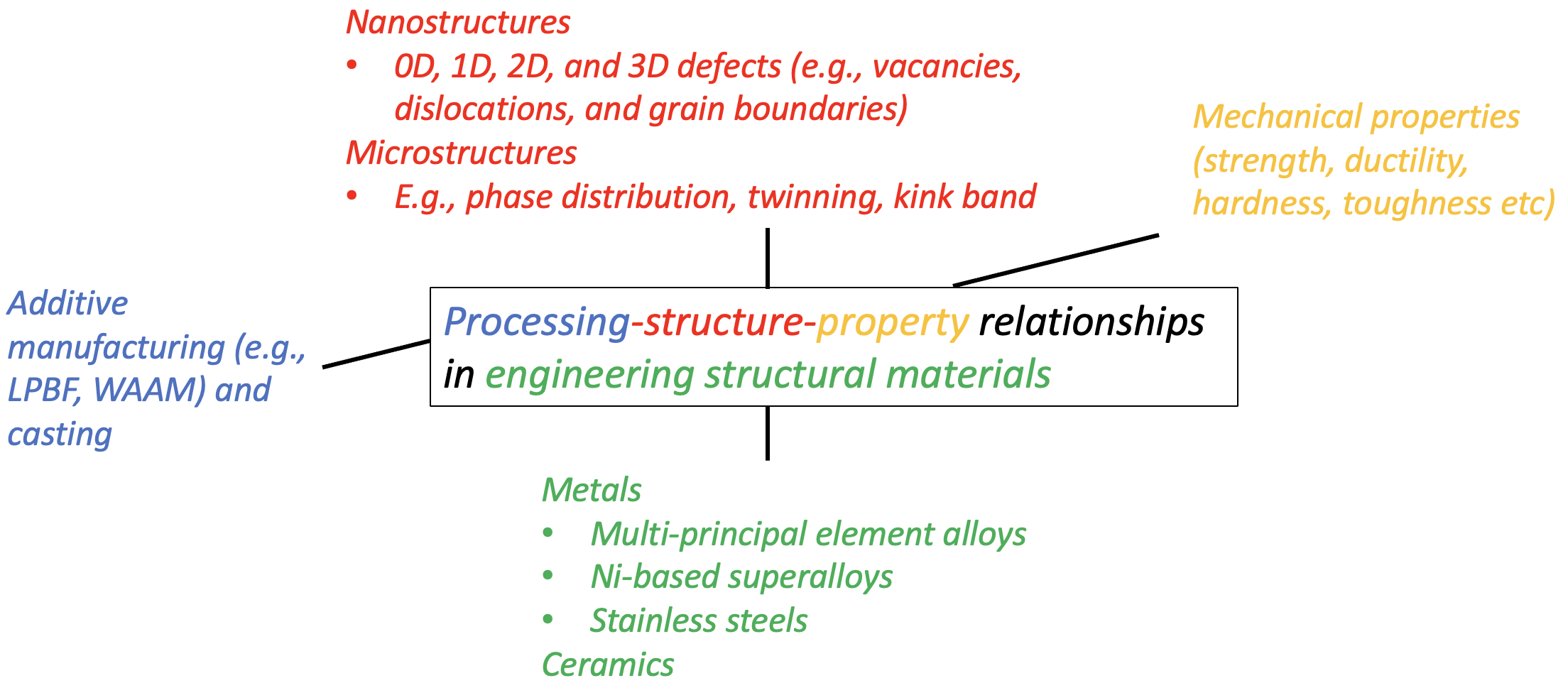Research
In the CM3 Lab, we make scientific and technical advances in materials, mechanics, and manufacturing.
From the scientific perspective, we investigate processing-structure-property relationships in engineering structural materials.

From the technical perspective, we build software infrastructure for autonomous materials laboratories.

Physics-based models
For the processing-structure relation, we use the discrete element method for powder dynamics (using FLOW-3D AM), thermo-fluid model for melt pool (using FLOW-3D AM), and CALPHAD-informed phase field model for solidification (using Thermo-Calc and MOOSE).
For the structure-property relation, we mainly work with two multiscale modeling frameworks. The first framework involves concurrent multiscale modeling based on a coarse-grained atomistic method (using PyCAC). The second framework concerns sequential multiscale modeling, which links density functional theory (using VASP), atomistic simulation method (using LAMMPS), phase-field model (using PFDD and MOOSE), discrete dislocation dynamics (using OpenDiS), and crystal plasticity model (using ρ-CP).
Artificial-intelligence-based methods
We establish processing-structure-property relationships in materials using machine learning (ML), with a focus on neural networks and Gaussian processes.
We develop ML interatomic potentials and foundation potentials for atomistic simulations.
We also employ generative large language models for domain-specific applications in STEM.
Other components
We develop other software components for autonomous materials design, such as multi-agent framework, multi-objective optimization, and experimental scheduler.
Software
- PyCAC
- Python-scripted concurrent atomistic-continuum (CAC) simulation environment
- PFDD (code & overview)
- Phase-field dislocation dynamics
- Code repositories on GitHub